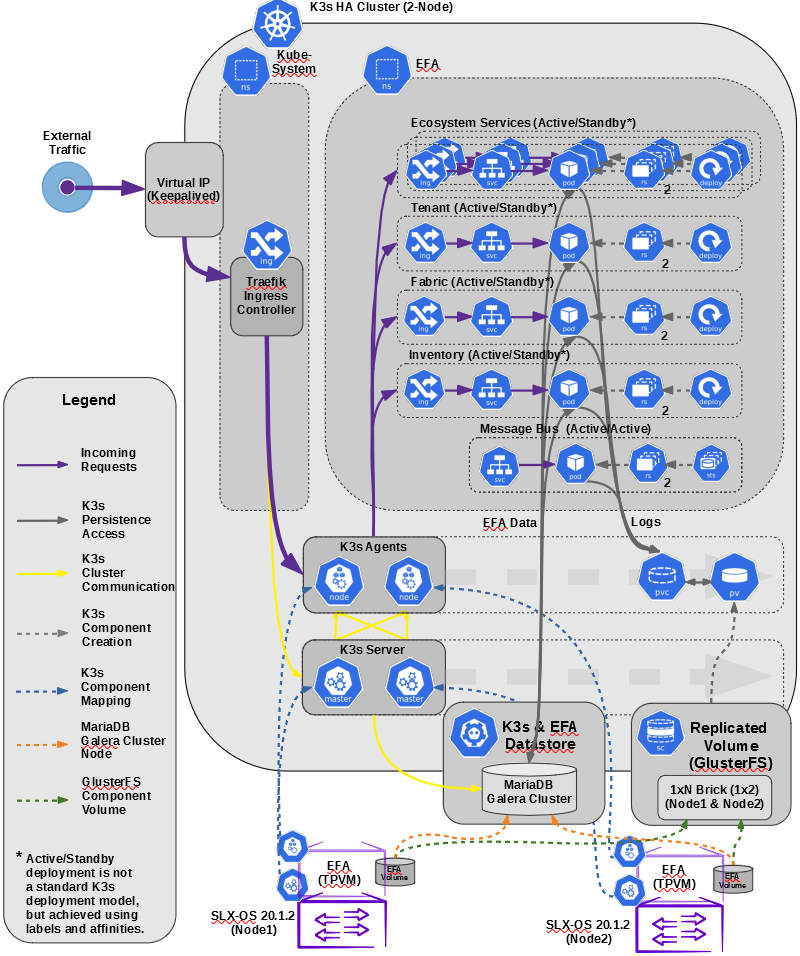EFA Deployment for High Availability
Beginning with EFA 2.3.0, you can deploy EFA in a two-node cluster for high availability.
Overview
A high-availability cluster is a group of servers that provide continuous up time, or at least minimum down time, for the applications on the servers in the group. If an application on one server fails, another server in the cluster maintains the availability of the application.
In the following diagram, EFA is deployed in the TPVM running on SLX-OS. The two EFA instances are clustered and configured with one IP address, so that clients need to reach only one endpoint. All EFA services are installed on each node. The node on which EFA is installed is the active node and processes all requests. The other node is the standby.
All operations provided by EFA services must be idempotent, meaning they produce the same result for multiple identical requests or operations. For more information, see the "Idempotency" section of the Extreme Fabric Automation Administration Guide, 2.4.0 .

- PV: Persistent Volume
- A piece of storage in the cluster that was provisioned by an administrator.
- PVC: Persistent Volume Claims
- A request for storage, similar to how a Pod requests compute resources.
- Brick
- The basic unit of storage in GlusterFS, represented by an export directory on a server in the trusted storage pool.
- SC: Storage Class
- A description of the “classes” of storage in a Kubernetes realm.
- SVC: Kubernetes Service
- A logical set of Pods and a policy by which to access them.
- ING: Kubernetes Ingress
- A collection of routing rules that govern how external users access services running in a Kubernetes cluster.
- RS: Kubernetes Replica Sets
- Ensures how many replicas of a Pod should be running.
- K3s
- Manages the life cycle of the EFA services in failover or fallback scenarios.
- Traefik
- An embedded ingress controller (load balancer) packaged with K3s.
- GlusterFS
- A high-availability replicated volume that maintains the persistent storage for the K3s cluster, the EFA database, and EFA logs.
- MariaDB
- A database service deployed outside of the K3s cluster in active-standby mode.
- RabbitMQ
- A messaging service deployed in the cluster in active-active mode.
Services in high-availability mode
| Service | Mode |
|---|---|
| Authentication | active-standby |
| RBAC | active-standby |
| Tenant | active-standby |
| Fabric | active-standby |
| Inventory | active-standby |
| RASlog | active-active |
| Notification | active-standby |
| System | active-active |
| Hyper-V | active-standby |
| OpenStack | active-standby |
| vCenter | active-standby |
| api-docs | active-active |
| rabbitmq | active-active |

